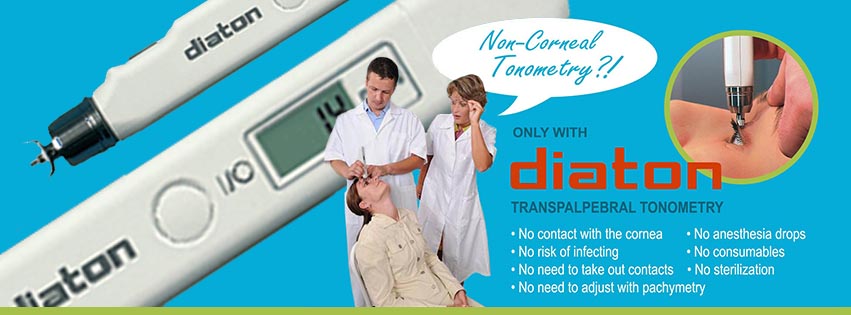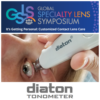Objective: The non-corneal transpalpebral tonometry Diaton is indicated for corneal diseases (ulcers, keratitis, keratoconus) and postoperative conditions of the cornea. The handy, small “Diaton” tonometer is also used in bed rest patients. The present study is concerned with the reproducibility and inter-examiner reliability of intraocular pressure measurement with diaton tonometer as well as with the possibility to use the procedure while outpatient management.
Methodology:21 patients (42 eyes) participated. 3 examiners carried out the measurements: Examiner 1 had long-term experience with diaton tonometer. Examiners 2 and 3 completed an intensive measurement course followed with the final exam. The IOP measurement on each eye was performed at 5 min intervals by each examiner in a random order. The results of each examiner were compared with the results of the other examiners. As a control method IOP measurements with Goldmann applanation tonometer (GAT) were performed in 21 eyes of the patient group.
Results of diaton tonometer measurements: [Median (1st quartile – 3rd quartile)] Examiner 1: 15.0 (13.0-17.0) mmHg, Examiner 2: 15.5 (13.0-18.5) mmHg, Examiner 3: 15.0 (12.3-18.0) mmHg. The difference was not significant (p = 0.645, Kendall’s W-test, power> 0.8). The inter-examiner variability coefficient was 7% (4% -9%).The intra-class correlation coefficient and associated 95% confidence interval were 0.935 (0.871-0.971) (p <0.001). In the additionally separately considered GAT control group no significant differences to diaton tonometer results was found: GAT values: 15.5 (14.0-17.0) mmHg. diaton values – Examiner 1: 16.0 (15.0-19.0) mmHg; Examiner 2: 16.0 (14.8-19.3) mmHg; Examiner 3: 16.5 (13.0-19.0) mmHg (p = 0.530, Kendall’s W-test, power> 0.8).
Conclusions:The results show that non-corneal diaton tonometry is a complementary reliable method of intraocular pressure measurement. In particular, diaton tonometer makes it possible to determine IOP pressure values in patients who have contraindications to standard tonometric methods (eg, corneal ulcer).For correct diaton tonometer handling participation in a special user course is recommended. It goes without saying that examiners must familiarize themselves with the measurement procedure: a learning phase is also required for Goldmann applanation tonometry.
To find more about Diaton tonometer visit: http://www.TonometerDiaton.com
Guides and Training / Quick User Guide / How to Use Diaton tonometer: https://tonometer.wpengine.com/guides-training/










